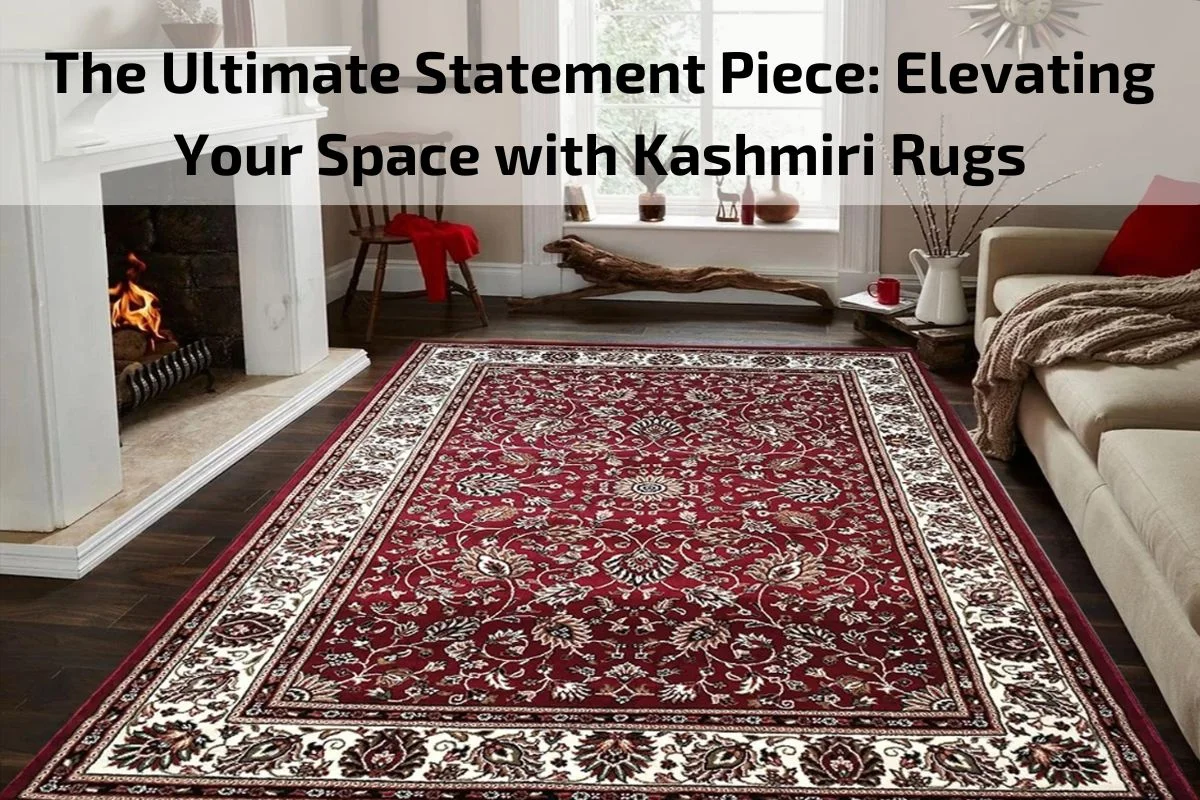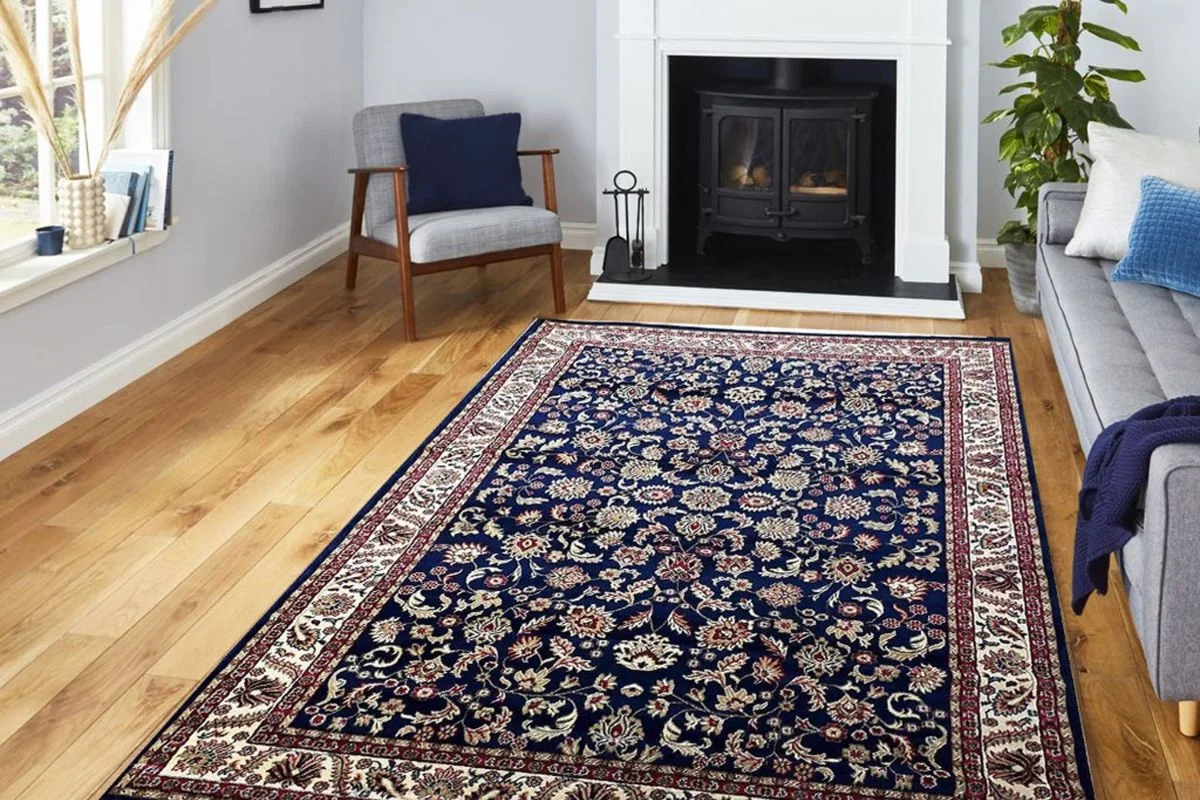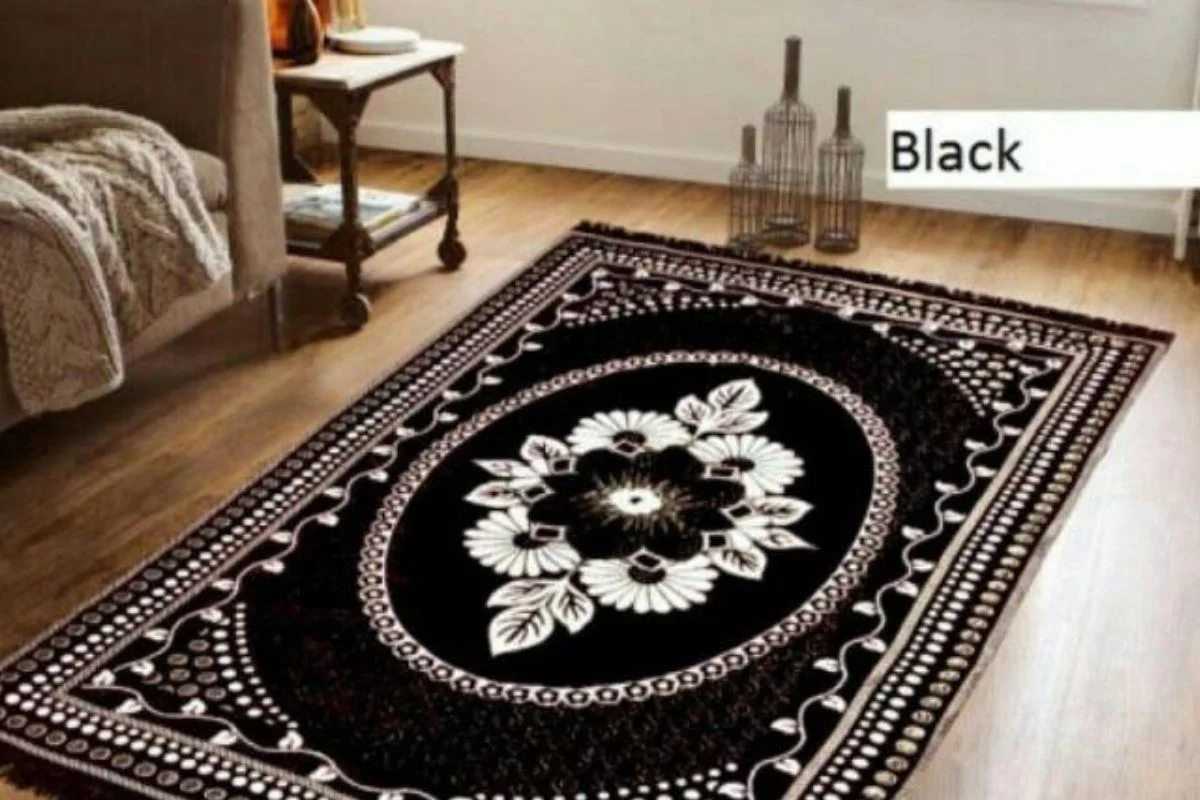The Ultimate Statement Piece: Elevating Your Space with Kashmiri Rugs

In the realm of interior design, certain elements possess the power to transform a space from mundane to magnificent, infusing it with character, charm, and a touch of opulence. Among these, few can rival the timeless allure of Kashmiri rugs. Renowned for their exquisite craftsmanship, intricate designs, and rich cultural heritage, Kashmiri rugs stand as the ultimate statement pieces, capable of elevating any room from mere decor to a work of art.
In this exploration, we embark on a journey into the captivating world of Kashmiri rugs, delving into their history, craftsmanship, and enduring appeal. From the bustling markets of Srinagar to the elegant homes of discerning collectors worldwide, Kashmiri rugs have long been prized for their unparalleled beauty and craftsmanship.
Join us as we unravel the threads of tradition and innovation woven into each Kashmiri rug, discovering how these masterpieces can breathe new life into your space, adding warmth, sophistication, and a touch of exoticism. Whether you’re drawn to their intricate floral motifs, geometric patterns, or vibrant hues, Kashmiri rugs offer a timeless elegance that transcends trends, making them the ultimate statement piece for any interior setting.
Brief overview of Kashmiri rugs
Kashmiri rugs are renowned worldwide for their exceptional craftsmanship, intricate designs, and cultural significance. Originating from the picturesque region of Kashmir in northern India, these rugs have a history spanning centuries, dating back to the Mughal era.
Handcrafted by skilled artisans, Kashmiri rugs are predominantly made using wool or silk, with some featuring a blend of both materials. The weaving process involves intricate hand-knotting techniques passed down through generations, resulting in rugs of unparalleled quality and durability.
What sets Kashmiri rugs apart are their elaborate designs, which often feature intricate floral motifs, paisleys, and geometric patterns. These designs are deeply rooted in Kashmiri culture and tradition, with each motif carrying its own symbolism and significance.
Due to their exquisite craftsmanship and timeless beauty, Kashmiri rugs are highly sought after by collectors, interior designers, and enthusiasts worldwide. Whether used as decorative accents or functional floor coverings, Kashmiri rugs add an element of luxury and sophistication to any space, making them prized possessions cherished for generations.
Importance of Kashmiri rugs in interior design
Kashmiri rugs hold a significant place in the realm of interior design, revered for their timeless beauty, exquisite craftsmanship, and cultural richness. Here are several reasons why Kashmiri rugs are important in interior design:
Artistic Heritage: Kashmiri rugs embody centuries of artisanal tradition and cultural heritage. Crafted by skilled weavers using age-old techniques passed down through generations, these rugs are not just floor coverings but works of art that reflect the region’s rich history and craftsmanship.
Intricate Designs: One of the defining features of Kashmiri rugs is their intricate designs. From elaborate floral patterns to geometric motifs and paisley designs, each rug tells a story through its artistry. These intricate designs add depth, texture, and visual interest to any space, enhancing the overall aesthetic appeal of the room.
Luxurious Materials: Kashmiri rugs are typically made from high-quality materials such as fine wool and silk, known for their softness, sheen, and durability. The use of luxurious materials not only adds a touch of opulence to the space but also ensures that the rugs stand the test of time, making them a worthwhile investment for homeowners.
Versatility: Whether used as statement pieces in grand hallways or as cozy accents in intimate living spaces, Kashmiri rugs are incredibly versatile. Their timeless appeal and wide range of designs make them suitable for various interior styles, from traditional to contemporary, rustic to modern.
Warmth and Comfort: Beyond their aesthetic appeal, Kashmiri rugs also serve a practical function by adding warmth and comfort to interiors. The plush pile of these rugs provides a soft and inviting surface underfoot, making them ideal for creating cozy and welcoming spaces, especially during the colder months.
Cultural Significance: Kashmiri rugs carry deep cultural significance, reflecting the region’s artistic traditions, folklore, and symbolism. Incorporating these rugs into interior design not only adds a touch of cultural authenticity but also pays homage to the skilled artisans and weavers who have preserved this heritage craft for centuries.
Global Appeal: With their exquisite craftsmanship and timeless elegance, Kashmiri rugs have garnered a global following. From luxury homes and boutique hotels to design studios and galleries, these rugs are prized by collectors, interior designers, and enthusiasts around the world, making them a coveted addition to any interior space.
Cultural Significance of Kashmiri rugs
The cultural significance of Kashmiri rugs is deeply ingrained in the heritage and traditions of the Kashmir region, and it extends far beyond their function as mere floor coverings. Here are several aspects that highlight the cultural importance of Kashmiri rugs:
Artisanal Tradition: The craft of weaving Kashmiri rugs has been passed down through generations of skilled artisans, who have honed their techniques and perfected their artistry over centuries. This tradition of craftsmanship is not only a source of pride for the artisans and their communities but also a vital part of the cultural identity of Kashmir.
Symbolism and Motifs: Kashmiri rugs are adorned with intricate motifs and patterns that hold symbolic significance in Kashmiri culture. From floral designs symbolizing beauty and abundance to paisley motifs representing fertility and eternity, each element of the rug’s design carries deeper meaning, reflecting the beliefs, values, and traditions of the region.
Historical Influence: The history of Kashmiri rugs is intertwined with the rich tapestry of Kashmiri history, including influences from various dynasties, empires, and cultural exchanges. Over the centuries, these rugs have evolved in response to changing political, social, and artistic currents, embodying a blend of indigenous traditions and external influences.
Economic Empowerment: The production of Kashmiri rugs provides a livelihood for thousands of artisans and their families in the region. By preserving and promoting this traditional craft, Kashmiri rugs contribute to the economic empowerment of local communities, helping to sustain livelihoods and preserve cultural heritage in the face of modern challenges.
Cultural Diplomacy: Kashmiri rugs serve as cultural ambassadors for the region, representing its artistic excellence and cultural diversity on the global stage. Through exhibitions, trade fairs, and collaborations with international designers and collectors, Kashmiri rugs promote cross-cultural exchange and dialogue, fostering greater appreciation and understanding of Kashmiri culture worldwide.
Status and Prestige: In Kashmiri society, owning a handcrafted rug is often seen as a symbol of status, wealth, and taste. Traditionally used as dowry items and heirlooms passed down through generations, Kashmiri rugs hold a special place in the hearts and homes of families, serving as tangible expressions of heritage, identity, and social standing.
Preservation of Craftsmanship: In an era of mass production and mechanization, the preservation of traditional craftsmanship is more important than ever. By supporting the production and appreciation of Kashmiri rugs, individuals and organizations play a crucial role in safeguarding this cultural heritage for future generations, ensuring that the legacy of Kashmiri rug making endures for centuries to come.
Incorporating Kashmiri rugs into contemporary interior styles
Incorporating Kashmiri rugs into contemporary interior styles can add a unique touch of luxury, sophistication, and cultural authenticity to any space. Here are some tips and ideas for seamlessly integrating Kashmiri rugs into modern interiors:
Neutral Backdrop: Use Kashmiri rugs as focal points in rooms with neutral color palettes. The intricate designs and vibrant hues of the rugs will stand out against a backdrop of white, gray, or beige walls, adding visual interest and warmth to the space.
Mixing Textures: Pair Kashmiri rugs with furniture and accessories that feature a mix of textures, such as leather, velvet, and metal. This juxtaposition of textures creates a dynamic and visually appealing contrast, enhancing the overall aesthetic of the room.
Layering: Experiment with layering rugs to create depth and dimension in the space. Place a larger, solid-colored rug as a base layer, and then layer a smaller Kashmiri rug on top to add pattern and color. This technique adds visual interest and creates a cozy, inviting atmosphere.
Contrast and Balance: Balance the intricate patterns of Kashmiri rugs with clean-lined furniture and minimalist decor. This juxtaposition of ornate and modern elements creates a harmonious balance, allowing the rugs to shine without overwhelming the space.
Mixing Styles: Don’t be afraid to mix Kashmiri rugs with furniture and decor from different styles and eras. Whether you’re decorating a contemporary loft or a mid-century modern home, Kashmiri rugs can add a touch of timeless elegance and cultural richness to any interior style.
Statement Piece: Let the Kashmiri rug be the star of the room by keeping the rest of the decor understated. Choose furniture and accessories that complement rather than compete with the rug, allowing its intricate designs and vibrant colors to take center stage.
Artwork Inspiration: Draw inspiration from the colors and motifs of Kashmiri rugs when selecting artwork and decorative accents for the space. Look for paintings, textiles, and sculptures that echo the rug’s themes, creating a cohesive and harmonious look throughout the room.
Global Fusion: Embrace a global fusion aesthetic by mixing Kashmiri rugs with decor and furnishings from different cultures and regions. Incorporate elements such as Moroccan poufs, Indian textiles, and African masks to create a vibrant and eclectic space that reflects your personal style and travels.
Popular types of Kashmiri rugs
Kashmiri rugs encompass a rich diversity of styles, patterns, and techniques, each reflecting the region’s cultural heritage and artisanal excellence. Here are some popular types of Kashmiri rugs:
Jaipur Rugs: Jaipur rugs are known for their exquisite craftsmanship and intricate designs. These rugs often feature intricate floral motifs, paisley patterns, and geometric designs, meticulously handcrafted by skilled artisans using fine wool or silk.
Senneh Rugs: Senneh rugs, also known as Srinagar rugs, originate from the city of Srinagar, the capital of Kashmir. These rugs are characterized by their intricate knotting techniques, soft color palettes, and traditional Persian-inspired designs, such as medallions, vines, and arabesques.
Amritsar Rugs: Amritsar rugs are renowned for their bold colors, large-scale designs, and impeccable quality. These rugs typically feature geometric patterns, floral motifs, and intricate borders, woven with high-quality wool or silk and often embellished with metallic threads or highlights.
Kani Shawls: Kani shawls are a traditional form of Kashmiri textile art that dates back centuries. These shawls are woven using a special wooden loom called a kani, which allows for the intricate weaving of intricate patterns and designs. Kani shawls often feature elaborate floral motifs, paisley patterns, and intricate borders, making them highly prized for their beauty and craftsmanship.
Chainstitch Rugs: Chainstitch rugs, also known as crewel rugs, are crafted using a special embroidery technique known as chainstitching. Skilled artisans hand embroider intricate patterns and designs onto a base fabric, typically made of cotton or wool. Chainstitch rugs are known for their vibrant colors, intricate designs, and plush texture, making them a popular choice for adding a touch of Kashmiri elegance to any room.
Pashmina Rugs: Pashmina rugs are made from the finest quality pashmina wool, sourced from the Changthangi breed of goat native to the Himalayan region. These rugs are prized for their softness, warmth, and luxurious texture, making them a favorite choice for adding a touch of luxury to any interior space. Pashmina rugs often feature traditional Kashmiri motifs, such as paisleys, flowers, and birds, woven into intricate patterns using a combination of hand-knotting and hand-weaving techniques.
Conclusion
In conclusion, Kashmiri rugs stand as timeless masterpieces of craftsmanship, cultural heritage, and artistic expression. From the intricate designs to the meticulous handwork, each rug embodies the rich history and tradition of the Kashmir region, reflecting centuries of artisanal excellence and cultural exchange.




0 comments